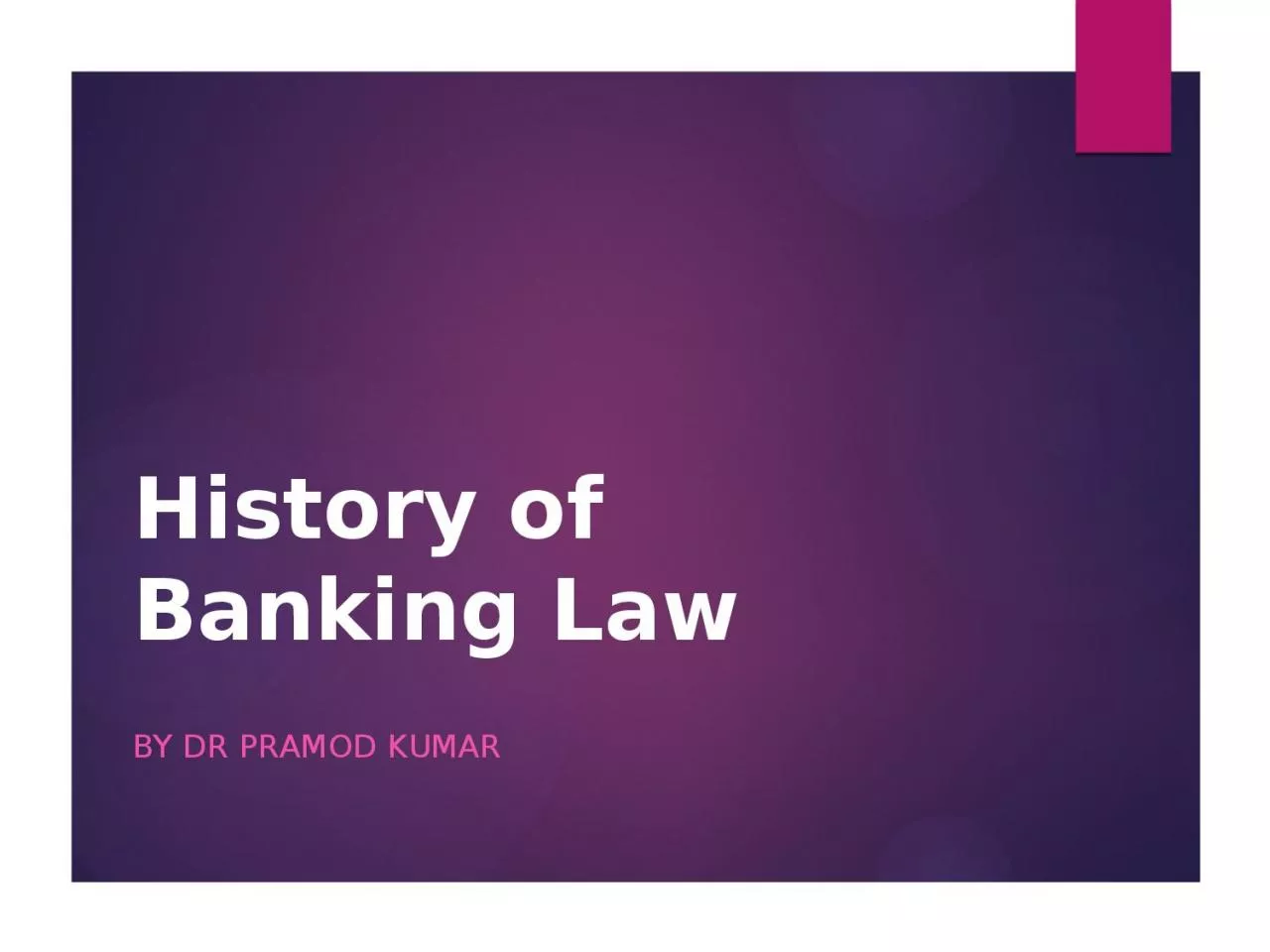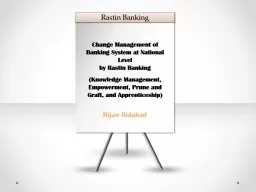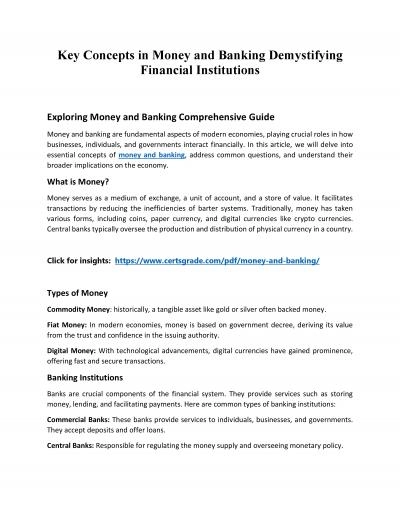PPT-History of Banking Law By Dr
Author : molly | Published Date : 2023-11-03
Pramod Kumar Safe in the temple 18th century BC In early civilizations a temple is considered the safest place It is a solid building constantly attended with a
Presentation Embed Code
Download Presentation
Download Presentation The PPT/PDF document "History of Banking Law By Dr" is the property of its rightful owner. Permission is granted to download and print the materials on this website for personal, non-commercial use only, and to display it on your personal computer provided you do not modify the materials and that you retain all copyright notices contained in the materials. By downloading content from our website, you accept the terms of this agreement.
History of Banking Law By Dr: Transcript
Download Rules Of Document
"History of Banking Law By Dr"The content belongs to its owner. You may download and print it for personal use, without modification, and keep all copyright notices. By downloading, you agree to these terms.
Related Documents














